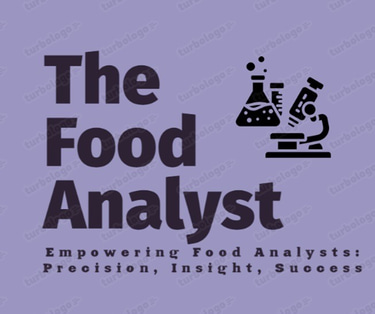"Empowering food analysts and laboratory professionals with expert insights, ISO 17025 resources, regulatory updates, industry testing requirements, training, and career opportunities for excellence in food testing."
Clause 7.2 – Selection, Verification, and Validation of Methods, Clause 7.2.1.3 and 7.2.1.4
Clauses 7.2.1.3 and 7.2.1.4 of ISO/IEC 17025:2017 emphasize using the latest valid methods and informing customers when methods are selected by the lab. These ensure consistency, reliability, and transparency in testing processes, especially when methods are updated or when the customer has not specified a particular procedure.
3 min read
ISO/IEC 17025:2017 Clauses 7.2.1.3 and 7.2.1.4 emphasize the correct use and selection of testing methods, ensuring accuracy, consistency, and traceability in laboratory results.
Clause 7.2.1.3: Using the Latest Valid Version of Methods
"The laboratory shall ensure that it uses the latest valid version of a method unless it is not appropriate or possible to do so. When necessary, the application of the method shall be supplemented with additional details to ensure consistent application."
What This Means:
Laboratories must always use the most current, valid version of a test method. Updates to methods are often made to improve reliability, accuracy, or to reflect new scientific knowledge. Using an outdated method could lead to invalid results or non-compliance.
However, there may be situations where it is not appropriate or possible to use the latest version. For example, the required equipment may not yet be available in the lab, or the customer may require the use of an older method for comparison purposes. In such cases, the laboratory must document the justification.
Supplementing the Method:
Even validated standards may require additional instructions to ensure consistent use by all personnel. These could include:
Sample preparation steps specific to the lab
Equipment settings or calibration procedures
Safety precautions based on local conditions
Example:
A lab testing pesticide residues in vegetables uses the AOAC official method 2007.01. In case a new version (e.g., 2024 revision) is released with improved detection limits, the lab must adopt this newer version unless justified. If the new version introduces an optional step for solvent extraction, the lab may need to justified the process adopted.
Clause 7.2.1.4: Selecting the Right Method When Not Specified
Text: "When the customer does not specify the method to be used, the laboratory shall select an appropriate method and inform the customer of the method chosen. Methods published either in international, regional or national standards, or by reputable technical organizations, or in relevant scientific texts or journals, or as specified by the manufacturer of the equipment, are recommended. Laboratory-developed or modified methods can also be used."
What This Means:
If the customer hasn’t provided a method, the lab has the responsibility to select one that is:
Scientifically valid
Appropriate for the material being tested
Aligned with international, national, or industry standards
Once selected, the lab must inform the customer of the chosen method, especially if it could affect the results or interpretation.
Sources of Valid Methods:
Standards: ISO, AOAC, BIS, FSSAI
Scientific Literature: Peer-reviewed journals
Equipment Manufacturer: Some instruments come with validated operating procedures
Internal Methods: Developed by the lab based on research and validated performance
Using Modified or Lab-Developed Methods:
When no standard method is available, or existing methods need adjustment for new products or matrices, laboratories can develop their own procedures. These must be validated to ensure they produce reliable results.
Example :
A client sends a new herbal tea blend and does not specify the method for caffeine content analysis. The lab chooses an HPLC method published in a peer-reviewed journal. The lab documents this selection and informs the client. If needed, the lab may also adjust the sample preparation for high-fat content in the blend and validate the changes.
Best Practices for Compliance:
Maintain Method Repository: Keep a controlled list of all current methods. Include version numbers and review dates.
Regular Updates: Assign responsibility for checking updates from standard organizations (e.g., ISO, AOAC).
Method Review Committee: Set up a team to evaluate and approve new or revised methods.
Communicate with Clients: Always inform clients when you are selecting a method on their behalf. Record their acknowledgment.
Training and Access: Make sure all lab personnel are trained on the latest methods. Provide easy access to documents.
Document Justifications: If a method is not updated or has been modified, record the reasons, the risk assessment, and approval.
Clauses 7.2.1.3 and 7.2.1.4 ensures that laboratory testing remains:
Reliable: Results are based on the most scientifically sound methods.
Reproducible: Other labs or auditors can repeat the method and get consistent results.
Transparent: Customers are aware of how their samples are tested.
Compliant: The lab meets accreditation and regulatory requirements.
© 2025. All rights reserved. All content on this website is the intellectual property of The Food Analyst. Unauthorized use or reproduction is prohibited.
Contact Us
The Food Analyst Team
We are available in multiple locations:
Bangalore | Delhi | Mumbai
Email for editorial: contact@foodanalyst.in
For advertisement: inquiryfoodanalyst@gmail.com
